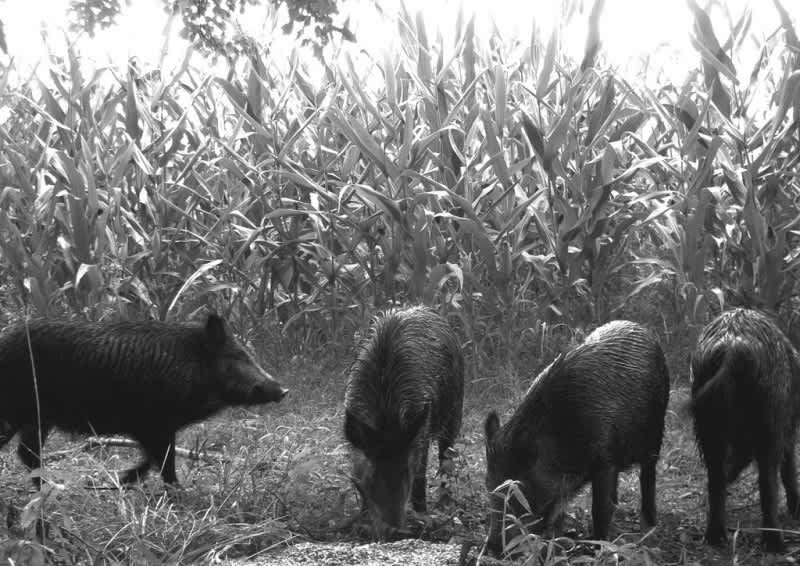National Study Investigates the Presence of Feral Swine in Vermont
OutdoorHub 05.06.14

Free-ranging feral swine are on the move and a new national study looks to see if they have entered Vermont. Already present in New Hampshire, this invasive species has become the most invasive and destructive large mammal species in North America and is an increasing threat to states in the Northeast.
APHIS Wildlife Services has received federal funds for $20 million to begin a collaborative, national feral swine management initiative with local, state and federal partners, including VT Wildlife Services, Vermont Agency of Agriculture Food and Markets, and Vermont Fish & Wildlife Department. The initiative is aimed at preventing further spread of feral swine and to reduce their population, damage, and associated disease risks to protect both human health and the health of domestic swine.
“We occasionally hear word of a wild boar in the state,” said Mark Scott, wildlife director, Vermont Fish & Wildlife Department. “This funding will bolster Vermont’s monitoring efforts on wild hogs. Working together, Wildlife Services, our department and the Agriculture Agency will now to be able to proactively educate and monitor for feral swine.”
Nationwide feral swine annually cause an estimated 1.5 billion dollars in damage and can destroy as much as 1,000 acres per hour. They prey upon white-tailed deer fawns, wild turkeys, grouse, woodcock, other ground nesting birds and their eggs, insects, frogs, and salamanders. Feral swine will also out-compete native wildlife for food, such as acorns and beechnuts which are important and variable resources to Vermont wildlife.
Along with property and wildlife destruction, feral swine can threaten the health of people, livestock and pets by transmitting as many as 30 pathogens and 37 parasites. Of particular concern are Brucellosis, Pseudorabies, Leptospirosis and Trichinosis, which pose human and/or livestock health risks.
Feral swine come in many colors and shapes but are most often black or brown and weigh anywhere from 100 to 200 pounds. They leave behind unique signs, such as rooting, wallows and tree rubs, and have tracks similar to deer, although swine hoofs are rounder in overall shape and tend to be more splayed and blunt at the tips than deer tracks.
To help officials determine if feral swine are present in Vermont, please report sightings and any information to VT Wildlife Services (1-800-472-2437) or email fwinformation@state.vt.us.

